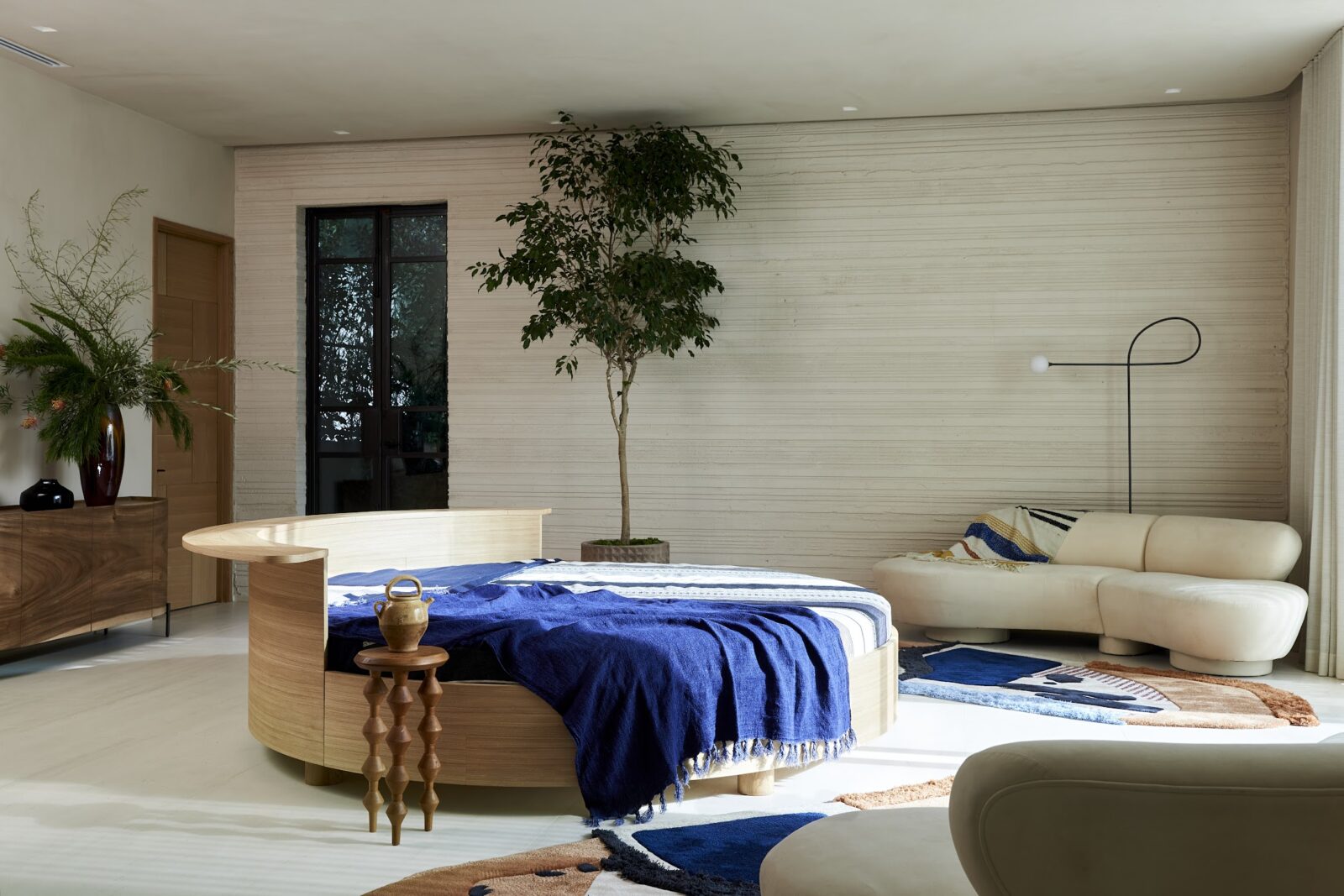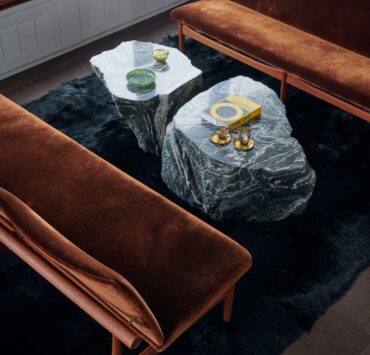From her early days crafting seashell collages in Venice beach, California to founding Kim Gordon Designs, designer Kim Gordon has consistently challenged convention. Her design work is drenched in warm natural light, her rooms have a groovy flow, and they always include an element of the unexpected.
In our wide-ranging conversation, Gordon opens up about her journey from artist to interior designer, her analogue process for creative discovery, and the challenges today’s designers face when it comes to billing. Click play on the video below to watch our discussion or read on for the highlights:
Business considerations in design
There is increasing strain on the way designers bill for their time and services in today’s market. Traditional markup models for products or design fees are becoming less effective as clients increasingly turn to online platforms to source products. Gordon and I discuss the alternatives to traditional fee structures — or amendments to them, rather — including increased flat fees or hourly rates, to offset what may be lost in product mark-up’s. Designers and manufacturers alike should be aware of the growing price transparency in the industry and focus on providing added value to the products they sell in the form of quality and personalization and turnkey services akin to the hospitality industry.
Let there be light
When she first arrived in California from the east coast, there wasn’t much discussion about the indoor-outdoor connection. In Venice Beach, of all places, it seemed radical when Gordon suggested letting all the natural sunlight flood into her client’s homes. Today, that is a given.
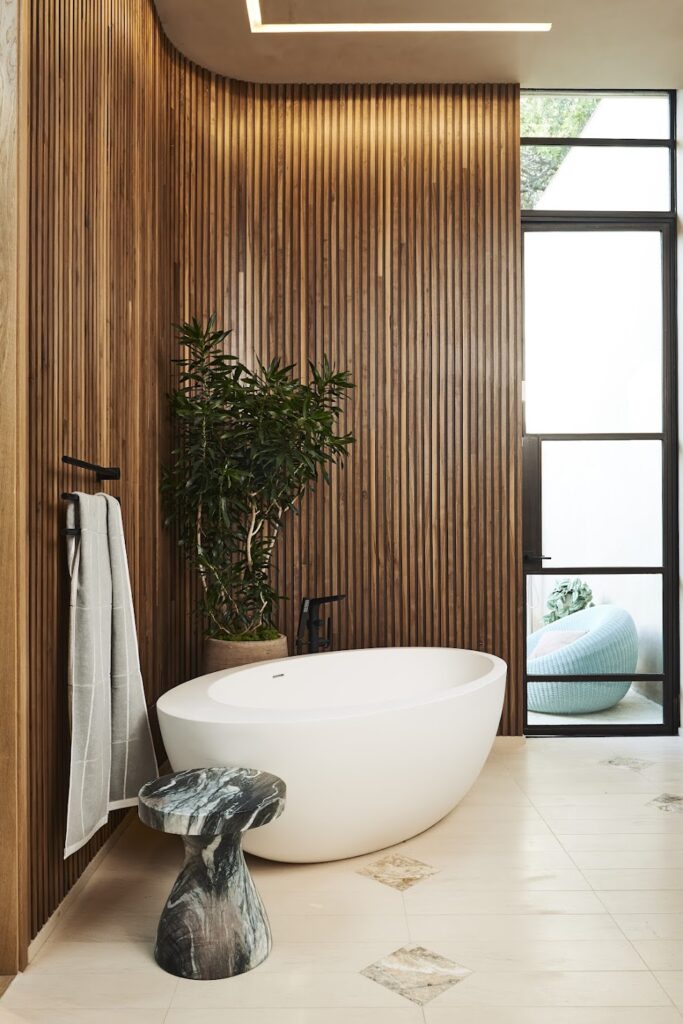
Personalization and sustainability
Gordon rejects the cold, sterile and generic, instead any space she touches has an element of whimsy to it. She stresses making functional design decisions based on what people actually need, rather than basing design decisions on fleeting trends, and designing based upon what makes the client’s heart sing. This includes prioritizing sustainability and designing for personal comfort. One specific example Gordon shares is optimizing floor plans for large closets rather than oversized primary bedrooms.
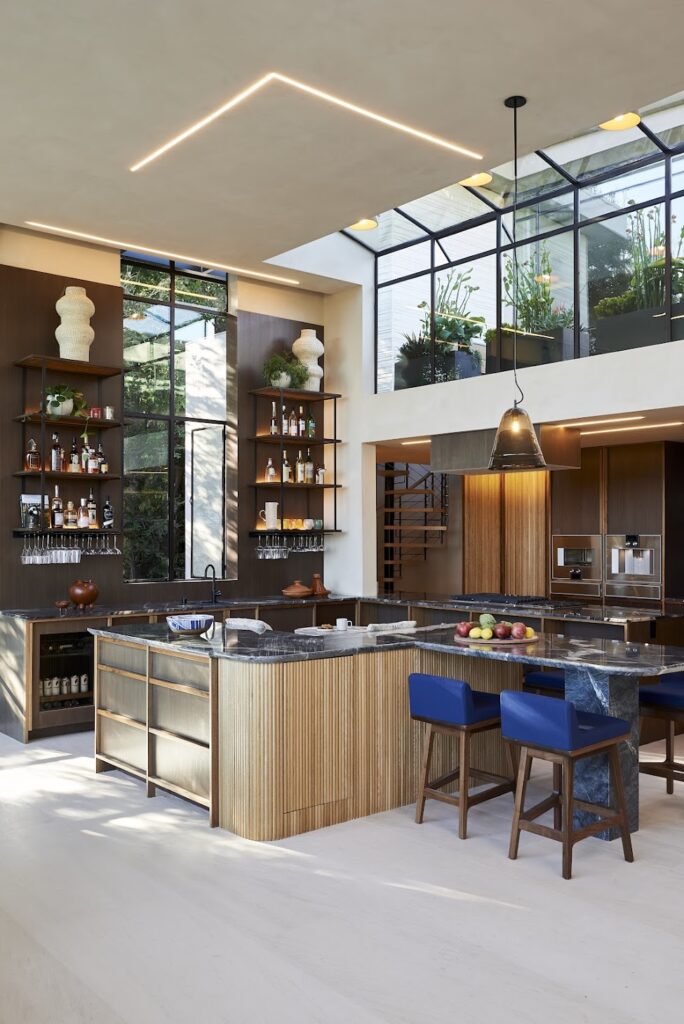
Influence of social media
We all know social media has altered client expectations. Clients arrive at their first designer meeting with preset ideas from Pinterest or Instagram, creating challenges for designers who must balance client visions with their own creative approach and trade-exclusive resources. Gordon understands the algorithmic reinforcement of a singular design aesthetic can be lethal for creativity so she instead, turns to good old fashioned magazines and attributes them with being her creative lifeline for new discovery.
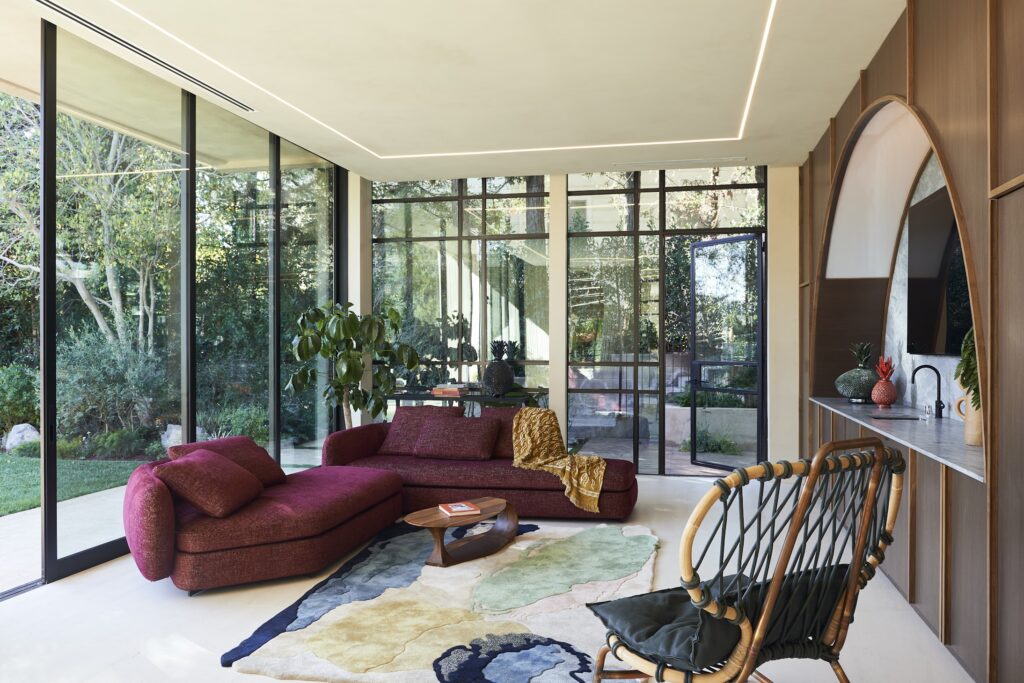
The value of travel
Gordon loves using travel as a tool to broaden her design perspective. She speaks about how staying in (and working out of) hotels informs her design work. This exposure helps her understand not only diverse aesthetics but the way hotels bring together communities (when done well) and integrate them into her designs.
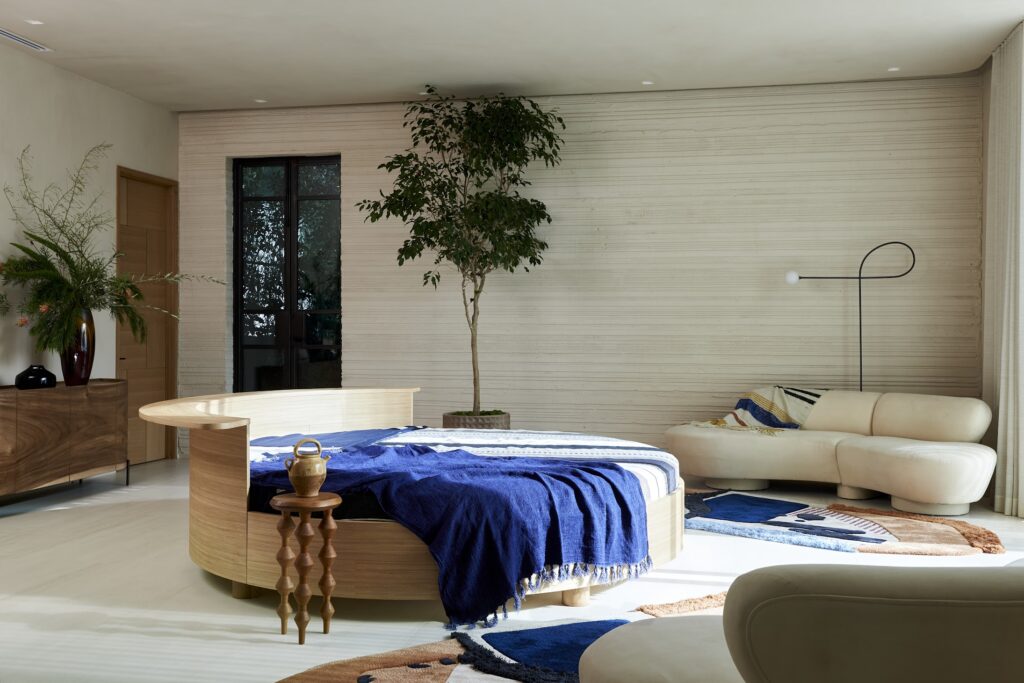
Customization in design
The future of design, according to Gordon, will involve warmer, personalized homes with smaller footprints. Homes will increasingly reflect the specific tastes and needs of their owners, rather than adhering to generic design trends – at least that is the hope if we’re able to break free from the algorithmic repetition, trust designers and artists, and actively seek out analogue ‘real world’ inspiration. | To learn more about Kim Gordon, visit her online.

